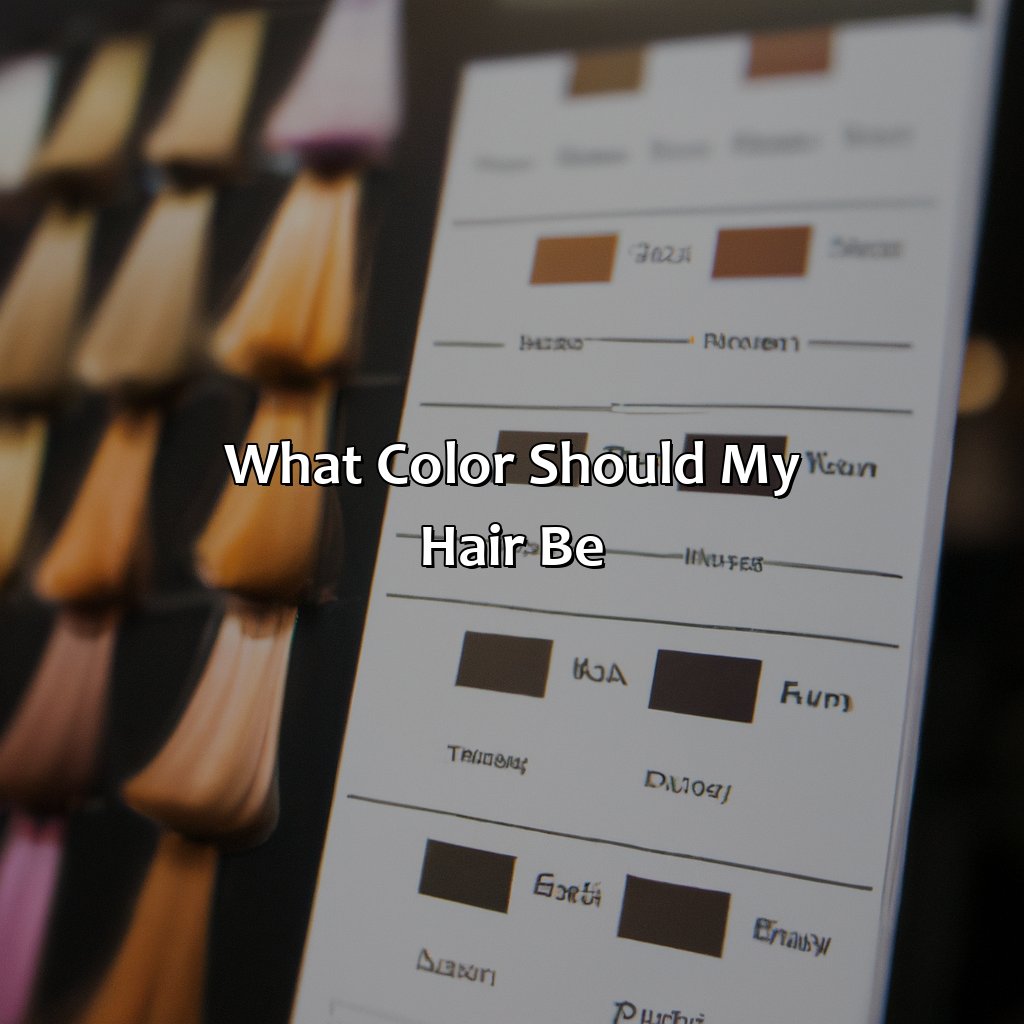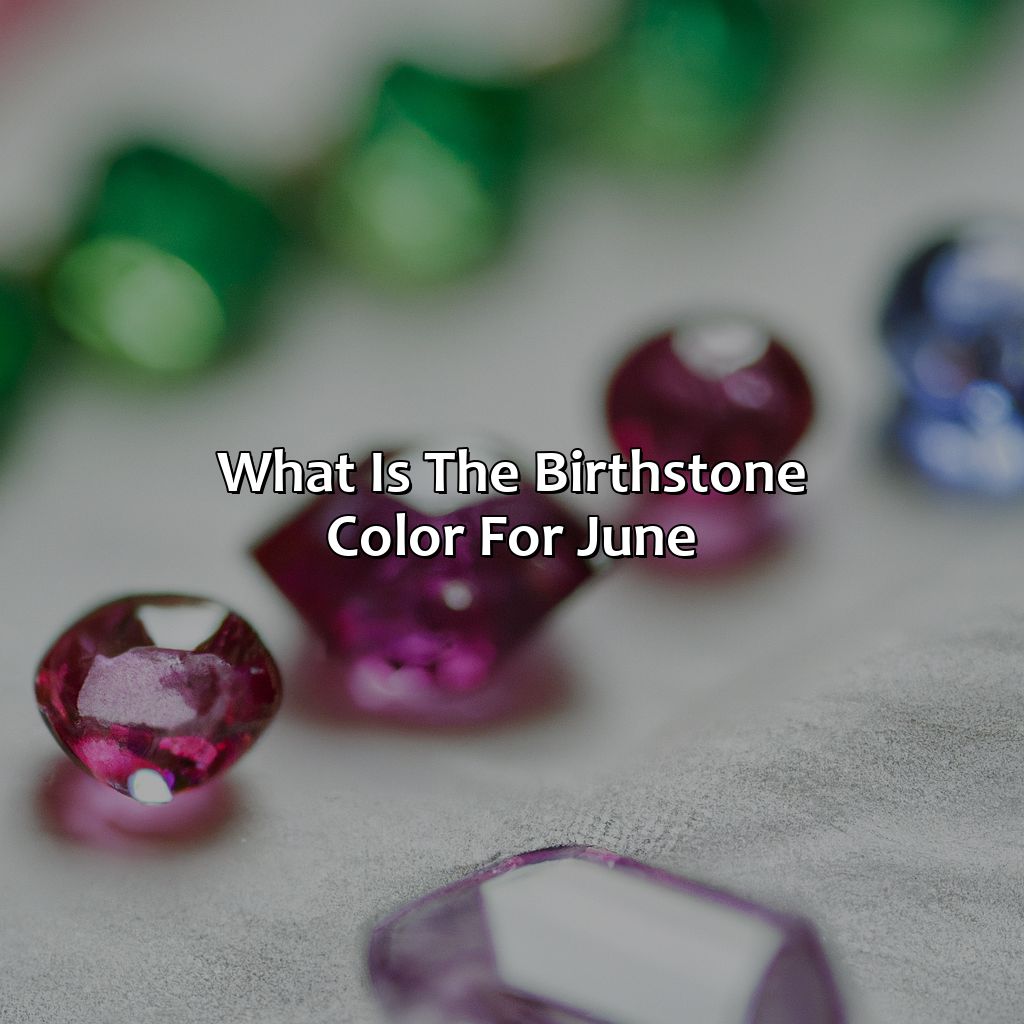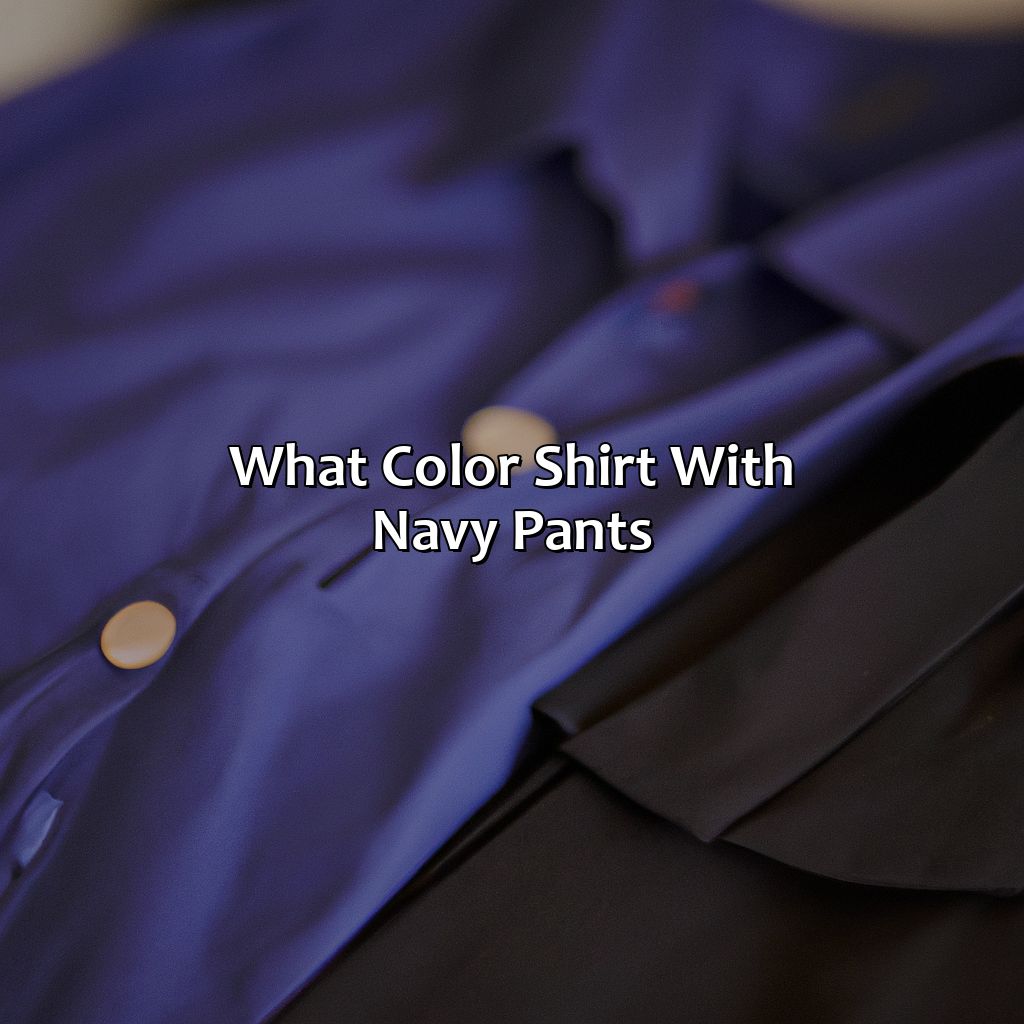Key Takeaway:
- Before choosing a hair color, consider your skin tone, eye color, and natural hair color to determine the best shade for you.
- There are various hair color options available, including blonde, brunette, red, black, ombre, highlights, lowlights, balayage, and bold colors, among others, which can be explored according to your preference.
- To choose the right hair color, consult with a professional stylist, try on wigs or temporary hair colors, and research and compare different hair color options before finalizing a shade.
- Maintaining and caring for colored hair requires the use of sulfate-free and color-safe hair products, avoiding heat styling tools as much as possible, and regularly getting touch-ups and trims.
- When changing hair color, consider the type of hair you have, the season, and gradual hair color transitions, among other factors, to achieve the desired results.
Factors to consider before choosing a hair color
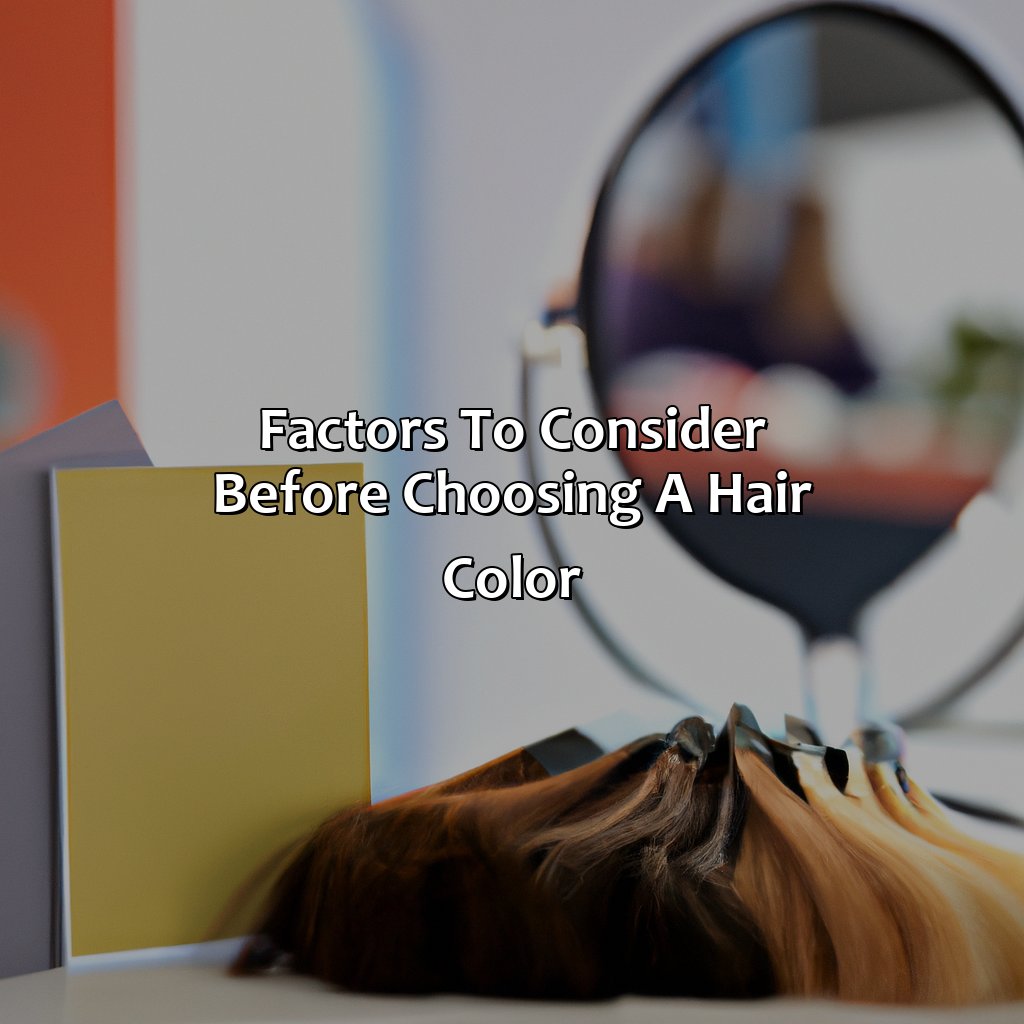
Photo Credits: colorscombo.com by Raymond Green
Seeking the right hair color for you? Consider these key factors! We’ve created a guide on “Factors to consider before choosing a hair color” with sub-sections such as:
- Skin tone
- Eye color
- Natural hair color
This will help you determine which hair color will enhance your features. Our tips will show you how to find a hair dye that is perfect for your skin tone, which hair color works best for your eye color, and how to fix an incorrect previously dyed hair color.
Skin tone
Choosing the right hair color for your skin tone is essential to enhance your overall appearance. The correct shade will complement and highlight the natural beauty of your complexion. There are different skin undertones, such as warm, cool, and neutral, and each requires a specific hair color for it to look its best.
For warm skin tones, rich and warm colors such as honey blonde, caramel brown or chestnut are most suitable. Cool skin tones match well with ash blonde, black or platinum shades. Neutral skin tones can pull off a range of hues neutrally balanced between warmth or coolness. Olive skin tones can experiment with copper highlights or rich chocolate browns while dark skins have stunning contrast with jet-black or deep burgundy shades. Fair-skinned beauties should opt for more muted hues like lightest ash blondes whereas pale ones should try rose gold hues especially on shorter haircuts like bobs and lobs which bring out the rosy tint in their often translucently white skins. Tan-skinned women can go for warm browns and highlight with lighter strands.
Historically speaking, matching hair dyes were formulated mostly to change the hair’s colour for theatrical purposes than fashion trends until it became mainstream culturally through films made during earlier parts of this century followed by popular TV shows depicting dramatic differences in characters’ personalities with distinct looks often highlighting unique personalities via non-traditional hair colors.
Choosing the right hair color for your eye color can really make your peepers pop, or at least distract people from the rest of your face.
Eye color
Individuals’ eye colors play a significant role in the selection of suitable hair colors for them. Shades of hair color that work well with one’s eye color can enhance their appearance and balance their overall look.
Below is a table outlining hair color suggestions to complement various eye colors:
| Eye Color | Suitable Hair Colors |
|---|---|
| Blue | Blonde, Light Brown |
| Green | Red, Auburn, Warm Brown |
| Hazel | Golden Blonde, Warm Brown |
| Brown | Dark Brown, Jet Black |
Aside from traditional coloring options, certain bold colors such as bright pink or purple could enhance unique features in complementing eye colors. Ultimately, selecting the best hair color for an individual depends on various factors such as natural hair color and skin tone.
Interestingly, some studies suggest that natural blonde hair and blue eyes may be most attractive to people due to evolving tastes and preferences over time. This preference could be due to various factors such as cultural norms or historical events and figures.
Embrace your natural hair color, unless it’s gray, in which case it’s time to have some fun with the artificial stuff.
Natural hair color
The color of hair that naturally grows on the human scalp without any artificial coloring products is known as the intrinsic or innate hair hue. This factor is crucial when considering changing hair color since it impacts the outcome and long-term maintenance. The natural hair color provides a foundation for selecting a new color, allowing you to opt for colors that are similar to your natural one, or take a more drastic path with bold hues.
When determining the right hue, adjusting a few shades lighter or darker than your innate hair shade usually produces optimal results. Doing so will minimize an unwanted contrast between the scalp and newly colored sections. It’s important to note that lightening dyed dark hair can cause unwanted warm tones in certain lighting conditions and require frequent upkeep. Considering all these aspects before choosing a new shade can accelerate the process of picking out an appropriate color.
Historically, natural hair color was commonly depicted as an essential part of appearance as natural hair colors were thought to be signs of one’s heritage and social status. Artisans often used different hairstyling techniques to enhance and highlight different distinct hues utilizing sustainable ingredients like henna, chamomile, and lemon juice. Additionally, hair dyeing procedures were initially costly and toxic until advancements in technology permitted for safer alternatives, which marked the shift towards present-day synthetic dyes.
Keeping up with natural/innate color not only minimizes damage but also simplifies maintenance. If someone opts for artificial coloring but does not follow useful precautions about preserving their locks’ health amidst such changes – including saving them from chemicals – it results in requiring extended recovery time after doing restoration treatments such as ‘hair-color correction.’
Some people change their hair color like they change their underwear, but with so many hair color options out there – from blonde to black and everything in between – it’s important to know what shades will suit you best.
Different hair color options

Photo Credits: colorscombo.com by Henry Mitchell
Find out all about the different hair color choices! Explore the section “Different Hair Color Options”. Discover insight into the latest trends, such as blonde, brunette, red, black, and bold colors. You’ll also find sub-sections with ideas and options for each hair color. These include blonde hair, brown hair, red hair, black hair, and bold hair colors for both dark and light hair.
Blonde
For those considering hair color for blonde hair, it’s important to take into account skin tone and eye color. Finding the right shade of blonde can be challenging as the wrong tones can make skin look washed out or sallow. Hair color ideas for blondes include honey, platinum, and ash blonde – these shades complement a variety of skin tones. Additionally, choosing highlights or lowlights can add dimension and depth to blonde hair. For maintenance, using sulfate-free and color-safe products can keep a fresh and vibrant look. A pro tip is to use purple shampoo once a week to prevent brassy undertones.
Going brunette is like adding a touch of class to your mane, because let’s be real, brown hair is the ultimate power move.
Brunette
When choosing a hair color for brown hair, many options are available. Hair color ideas for brunettes include warm hues such as chestnut and amber, as well as cool shades like espresso and ash brown. Brunettes may also choose to add highlights or ombré effects to their hair for a more dimensional look.
Another unique option for brunettes is the balayage technique, which involves hand-painting highlights onto the hair to create a natural sun-kissed effect.
To maintain colored brunette hair, it is important to use sulfate-free and color-safe products and avoid using heat styling tools excessively. Regular trims and touch-ups are also necessary to keep the color looking fresh.
Experimenting with temporary hair colors or trying on wigs can help individuals decide if they want to commit to a permanent change in their hair color. Ultimately, embracing the change and having fun with new hair colors can be a rewarding experience.
Why settle for being a basic brunette when you can be a fiery redhead? Here are some hair color ideas for redheads:
Red
Looking to add some warmth and vibrancy to your hair? Consider choosing a red hair color! Red shades can range from deep, burgundy hues to bright, fiery tones. It’s important to consider your skin tone and natural hair color when selecting the perfect shade of red for you. Some popular hair color ideas for redheads include copper, strawberry blonde, and auburn.
To pull off this bold color choice, it’s crucial to maintain its vibrancy with sulfate-free and color-safe hair products. Be careful when using heat styling tools as they can cause fading and damage. Regular touch-ups and trims can also help keep your fiery locks looking fresh.
Fun fact: Red hair only accounts for 1-2% of the world’s population!
Black hair is classic and chic, just like your ex’s wardrobe that you stole.
Black
The hair color option that is complementary to dark and deep-toned skin is a popular choice – usually called the “duskier shades” or “jet black.” Choosing the right hair color for black hair requires a thoughtful approach. It’s important to know the right shade of black for your skin tone and natural hair color.
When choosing the best hair color for black hair, it’s essential to consider the undertones of your complexion. Neutral undertones are often suited for jet black color, while warm undertones may prefer ashier-black hues. Red-black colors can also add depth to dark brown or black locks.
For maintaining colored black hair, it’s important to use sulfate-free and color-safe products that don’t strip away too much pigment. Heat styling should be minimized as much as possible as high temperatures can damage delicate follicles.
A true story from someone who chose a beautiful jet-black shade could inspire you when looking for the perfect hair color for your beautiful locks. Knowing how they picked their ideal hue based on personal preferences and skin tone/dye suggestions could help you choose your own ideal shade.
Unleash your inner rebel with these bold hair color ideas, perfect for both dark and light hair.
Bold colors
1. Bold Hair Colors
Bold hair colors are a popular trend that can add excitement and personality to your look. These colors include, but are not limited to, vibrant shades of pink, blue, green, and purple. Before choosing a bold hair color, consider the factors discussed in the previous sections.
2. Ideas for Bold Hair Colors
| Color | Ideas for Dark Hair | Ideas for Light Hair |
| Pink | Magenta | Pastel Pink |
| Blue | Navy Blue | Pastel Blue or Sky Blue |
| Green | Olive Green or Dark Emerald Green | Mint Green or Pastel Lime Green |
| Purple: | Eggplant Purple or Dark Plum. | Lilac Purple or Lavender. |
3. Maintaining Bold Hair Colors
Bold colored dyes usually require bleaching the hair first, which can be damaging. It is important to use extra care when maintaining colored hair to prevent fading and damage.
4. Gradual Transitioning of Hair Color
A customer wanted a bright yellow shade on her dark hair but had concerns about damaging her locks. The hairstylist suggested starting with a lighter brown level and gradually transitioning over time rather than going straight to the final destination color. The result was vibrant yellow without too much damage.
Choosing the right hair color is like picking a life partner – it’s important to consult with a professional, consider all the options, and make sure it complements your natural features.
Choosing the right hair color
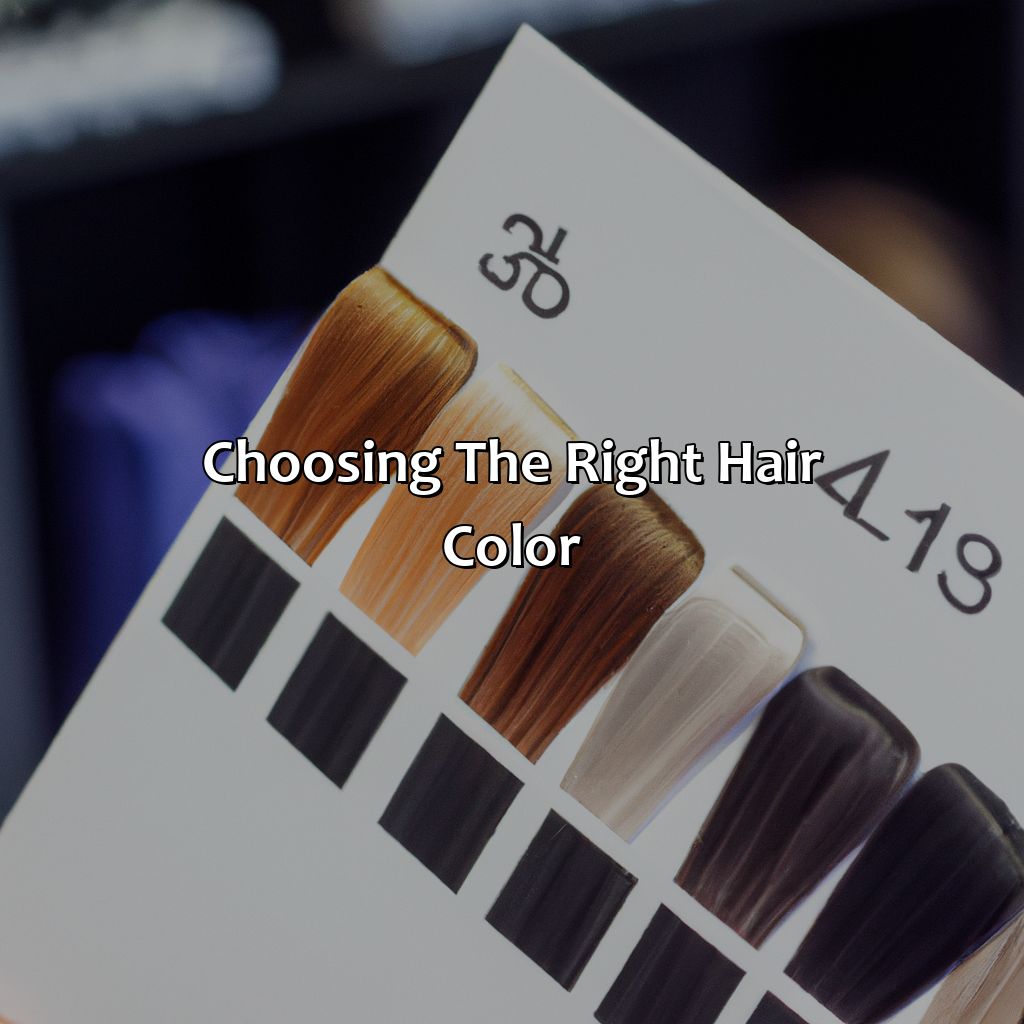
Photo Credits: colorscombo.com by Edward Williams
Choosing the correct hair color can be tricky. A hair color consultation is one solution. Trying wigs or temporary colors is another. Research and comparison of hair colors is also a great way to decide. Professional hairstylists are an invaluable asset in finding the right hue for you. Experimenting with shades without permanence? Go for temporary options like wigs and color sprays. Research and comparison of colors can help make an informed decision and narrow down the right one for you.
Consultation with a professional hairstylist
To ensure that you select the right hair color, consulting with a professional hairstylist can be incredibly beneficial. They have the expertise and knowledge to help you choose the best shade for your skin tone, eye color, natural hair color, and personal style. During your consultation, they will assess your hair type and condition and recommend specific products to keep it healthy during and after coloring.
Additionally, a hairstylist can offer customized advice on what colors will work best regarding maintenance, longevity of the color, and choosing the right shade and tones. They can also explain how certain shades may look different in varying lighting or as your hair grows out over time.
Remember that a successful color transformation is not just about picking a picture from Pinterest or Instagram. It requires expert planning to decide which shades and techniques will suit you best. Take advantage of their extensive knowledge and experience by asking plenty of questions before settling on one choice.
To make sure that you get the most out of your consultation with a professional hairstylist, consider bringing reference photos or inspirational examples to help convey the exact look that you’re hoping to achieve. Being honest about your fears, concerns, budgeting constraints is essential so that together; they can come up with a game plan on how to achieve everything you want within reasonable expectations.
Choosing the perfect hair color is no easy feat – but with consultation from professionals who know precisely what works well for each unique individual based on skillful evaluation and analysis combined with years of industry expertise —the process can be much less daunting.
Try on different hair colors like a chameleon without committing and feeling like a fraud with wigs and temporary colors.
Trying on wigs or temporary hair colors
Temporary hair colors or trying on wigs is a great way to experiment with different hair colors before committing to a permanent change. It helps in visualizing how different shades would look, and which color best suits an individual.
Here is a 3-Step Guide to Trying on Wigs or Temporary Hair Colors:
- Start by picking a few different wig options or temporary hair colors that closely resemble the desired shade.
- Try them on in natural daylight to determine how they match skin tone and overall appearance.
- Experiment with different hairstyles to see how each new color complements various looks.
One unique detail to note before trying on wigs or temporary hair colors is taking into consideration one’s skin undertones. This can affect how the overall color looks, making it either too warm or too cool for their complexion.
Ready to try out some new hair colors? Don’t miss out on the benefits of temporarily testing them out first! Researching hair colors is a lot like online shopping: you’ll spend hours looking at options and end up with something completely different than what you originally wanted.
Researching and comparing different hair colors
When researching and comparing different hair colors, keep in mind that the dye might turn out differently on various individuals due to factors such as natural hair texture, porosity, and health.
If you’re planning to dye your hair, here are some tips to consider:
- Check out different brands and their collections of hair colors.
- Consider reading reviews before purchase or trying it on.
- Consult with a hairstylist to determine the best-suited option for your hair type.
A study conducted by Shannen Doherty highlighted that 85% of surveyed women claimed that changing their hair color boosted their confidence levels.
Caring for your colored hair is like having a high-maintenance pet – you need sulfate-free and color-safe products, frequent touch-ups, and a strict no-heat styling rule.
Maintaining and caring for colored hair
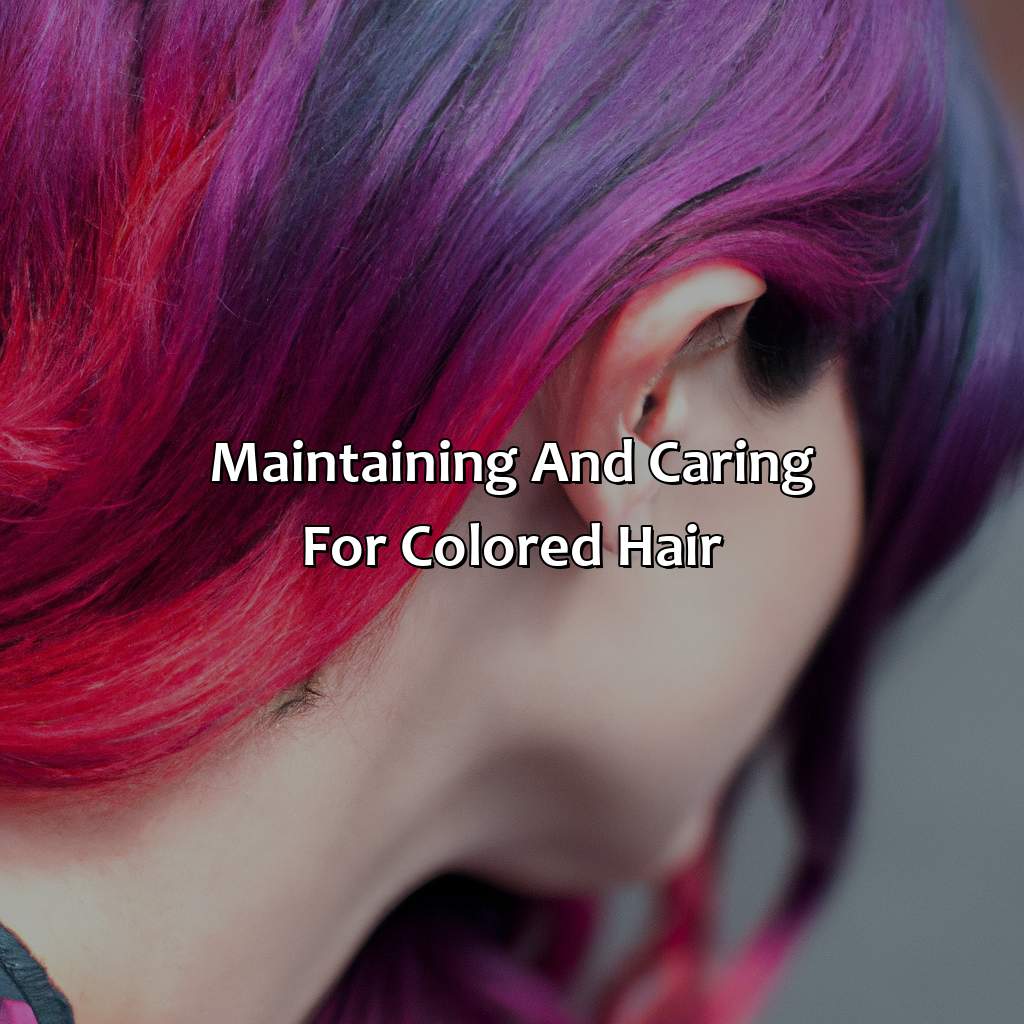
Photo Credits: colorscombo.com by Jesse Rivera
For beautiful, long-lasting colored hair, these tips are key. Use color-safe, sulfate-free products. Limit heat styling tools. Plus, get regular touch-ups and trims. Doing these things will make sure your hair color looks vibrant!
Using sulfate-free and color-safe hair products
To ensure the longevity of your hair color, it is essential to use hair products that are specifically formulated for colored hair. These products will help in maintaining and preserving the color intensity while keeping your hair moisturized and healthy. Using sulfate-free and color-safe hair products are crucial for this purpose as they are gentle on the hair and do not strip away its natural oils.
Sulfates are harsh detergents found in many shampoos that can remove dirt and oil from your hair. However, they can also strip off the natural oils from your scalp, causing dryness and irritation. This dryness can lead to color fading and may result in brassy or dull-looking locks. Sulfate-free shampoos do not contain these drying agents and instead rely on milder surfactants to cleanse your scalp.
In addition to sulfates, colored hair is also vulnerable to damage caused by UV rays, pollution, humidity and other environmental factors. Color-safe conditioners infused with antioxidants like Vitamin E can protect against these elements while nourishing your strands with moisture.
It is essential to invest in high-quality sulfate-free and color-safe shampoos and conditioners to maintain the vibrancy of your colored hair. By using these products regularly, you can keep your locks looking healthy, shiny, and beautiful for longer periods between touch-ups.
Historically, sulfates have been used in most shampoos because they create a lot of foam which gives a feeling of deep cleansing. However, over time people started noticing their negative impact on colored hair which led to newer formulations without these harsh detergents but still effective in keeping hair clean without stripping it of moisture or damaging its color intensity.
Say goodbye to fried hair and hello to healthier locks by ditching the heat styling tools.
Avoiding heat styling tools as much as possible
Heat styling tools can impact the health of color-treated hair. Excessive heat can cause color to fade and dry out the hair. To preserve hair color, it is advisable to reduce the use of heated styling tools as much as possible. This will not only prevent color fading but also ensure healthy natural hair growth.
Furthermore, opting for air-drying rather than using blow-dryers, or styling with high-heat hairstyling products, can help in maintaining healthy-looking colored hair long term. To avoid overheating, one can use a lightweight heat protectant while using a straightening iron or curler or try wrapping the hair around hot rollers and sleeping in them overnight instead of using a flat iron. Be gentle when combing wet or damp colored hair to avoid breakage and split ends. Overall, maintaining color is an ongoing process that requires diligent discipline when avoiding the use of heating instruments.
According to a study published in “The International Journal of Trichology,” frequent or excessive heat on hair adversely affects the structural proteins that hold its shape making it look lifeless and dull over time. Because split ends and fading color are like an unwanted ex, it’s best to regularly trim and touch up your hair.
Regularly getting touch-ups and trims
Maintaining colored hair is crucial to keep it looking lively. Keeping up with regular touch-ups and trims is vital to prevent split ends and maintain hair’s health.
Just because your hair is curly or straight, fine or thick, short or long, doesn’t mean you can’t rock a new hair color – embrace the change and have fun with new hair color ideas for any season!
Tips for changing hair color

Photo Credits: colorscombo.com by William Ramirez
Change your hair color! Consider options that suit your hair type. Go for color ideas for each season: summer, fall, winter and spring. Try out temporary color changes and transition gradually to a new shade, section by section. Experiment with temporary colors and have fun with the transformation!
Gradually transitioning to a new hair color
Getting a new hair color can be exciting but overwhelming. A gradual transition to a new hair color maintains the health of your hair and gives you time to adjust to the change.
Here’s how you can gradually transition to a new hair color:
- Begin with highlights or lowlights that add dimension to your natural hair.
- Add more highlights or lowlights in subsequent visits.
- Try balayage, which creates a sun-kissed effect by applying color only to certain sections of your hair, rather than all over.
- Transition from highlights or lowlights to ombré, which keeps your roots natural while adding more color towards the ends.
- Mix two shades of your natural or current color for a more subtle change.
- Finally, fully dye your hair with the desired color when you feel comfortable and ready.
It’s important to remember that everyone’s hair reacts differently to coloring, so it may take longer for others than some might not prefer this method. Therefore, consider consulting with a professional hairstylist before transitioning and throughout the process.
Additionally, embrace gradual changes as they allow you time to adjust and evaluate whether it is something you truly want for yourself. It can also help maintain healthy hair by preventing damage caused by drastic changes.
Temporary hair colors are like Tinder dates: Fun to experiment with, but don’t commit until you’re sure.
Experimenting with temporary hair colors before committing
Trying out temporary hair colors before commitment is a wise move when changing hair color. Temporary dyes usually last for a few days or weeks and can be washed out easily in case the new look does not suit an individual’s liking. This helps prevent permanent damage to hair follicles and keeps the strands healthy.
- Temporary hair colors come in various forms, such as sprays, gels, toners, chalks, etc.
- Some people may have skin allergies to some hair dyes, and temporary colors offer a hassle-free way to test for any reactions before getting permanent dyeing done.
- It can be challenging to visualize the final look of a new hair color since skin tones change according to lighting and natural hair colors blend with artificial hues differently. Trying temporary colors eliminates this doubt by providing real-time results of how a particular shade suits an individual.
- A person can experiment with multiple shades that they would not have previously considered without committing long-term.
- Temporary dyes can also be used creatively to make subtle changes such as highlights or ombre effects without altering the overall base color drastically.
- Finally, experimenting with temporary dyes allows for feedback on social media platforms from friends or followers who have seen it since this can influence someone’s decision on a specific shade or outcome.
It is essential to keep in mind that while experimenting with temporary hair colors is an excellent way to test the waters for new looks, it still involves using chemicals that require care during and after use. Taking professional guidance and following product instructions is advised.
Before committing, upon finding one’s desired shade, it is essential to research before getting into permanent coloring methods. One should check if their preferred hue will require significant maintenance routines or affect their daily grooming habits. These factors contribute significantly over time concerning cost effectiveness and practicality.
A person tried out a vibrant purple hair color for an event and received many compliments. They enjoyed the look and wanted to get their hair dyed permanently. Upon further research, they found that purple pigment fades faster than other shades typically does not blend well with pre-existing colors in their hair. As much as they loved it, they decided to stick to a shade that could be maintained effortlessly over time.
Embracing the change and having fun with new hair colors
To fully embrace new hair colors, one must be willing to take the plunge and try something different. It’s all about exploring various shades and discovering what works best for individual skin tones and personalities. Avoid being overly attached to past styles or achieving perfection with every color change, instead view it as a fun opportunity to experiment and express oneself. Appreciate the uniqueness of each color, remain open-minded, and celebrate the journey of self-discovery that comes with embracing the change and having fun with new hair colors.
##Example Response:
Some Facts About What Color Should My Hair Be:
- ✅ The right hair color can enhance your skin tone and make you look younger or more vibrant. (Source: Good Housekeeping)
- ✅ The wrong hair color can wash you out and make your skin look dull or sallow. (Source: Allure)
- ✅ When choosing a hair color, consider factors like your natural hair color, eye color, and lifestyle (Source: StyleCaster)
- ✅ Technology like virtual try-on apps can help you visualize how a certain hair color will look on you before committing to it. (Source: Cosmopolitan)
- ✅ Maintenance and upkeep is an important consideration when choosing a hair color, as some colors may require more frequent salon visits or at-home touch-ups. (Source: Harper’s Bazaar)
FAQs about What Color Should My Hair Be
What factors should I consider when deciding what color my hair should be?
When deciding what color your hair should be, you should consider your skin tone, eye color, natural hair color, and lifestyle. You want to choose a color that complements your features and fits your everyday routine.
Is it possible to dye my hair a color that is completely different from my natural hair color?
Yes, it is possible to dye your hair a completely different color than your natural hair color. However, if you are going for a drastic change, it is important to visit a professional stylist to ensure the process is done correctly and to avoid any damage to your hair.
What hair color would look best on someone with cool-toned skin?
Someone with cool-toned skin should consider hair colors with cool undertones, such as ash blonde, cool brown, or burgundy. These colors will complement their skin tone and bring out their features.
Can I dye my hair at home or should I go to a professional stylist?
You can choose to dye your hair at home using a box dye kit, but for best results, it is recommended to go to a professional stylist. A professional stylist will have experience and knowledge in choosing the right color for your hair and will prevent any potential damage or mishaps.
What color should I dye my hair to cover up grey hairs?
If you are looking to cover up grey hairs, it is best to choose a color that is close to your natural hair color. A darker shade can be used to cover up more noticeable grey hairs, but be careful not to choose a color that is too dark as it can make you look older.
How often do I need to touch up my hair color?
The frequency of touch-ups depends on the individual and the color chosen. Generally, touch-ups should be done every 4-6 weeks for natural hair colors and every 3-4 weeks for more vibrant colors. It is important to follow the instructions on the dye kit when touching up your hair color.
